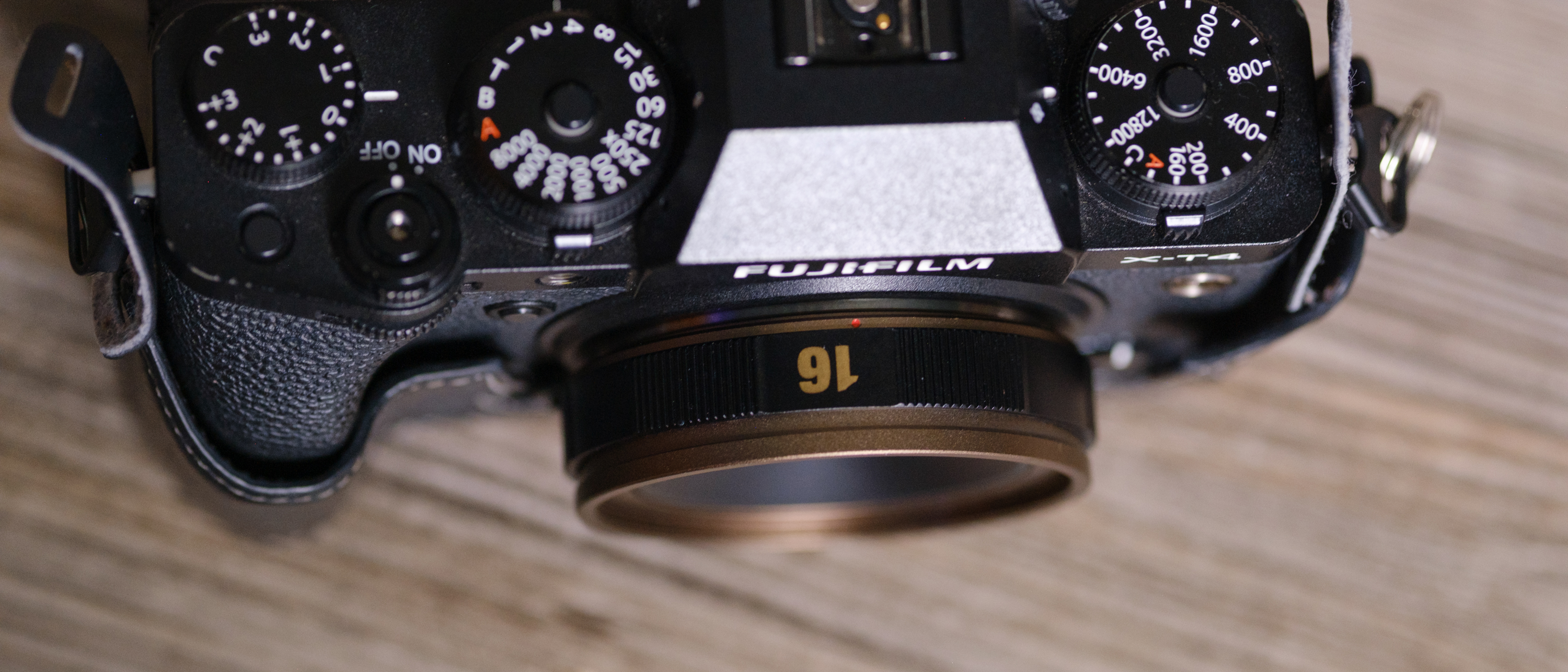Canon EOS R50 V versus Fujifilm X-M5: modern vs classic camera design, but which is the better option for video?
Canon's brand-new vlogging-focused camera takes on Fujifilm's hot retro vlogging compact in a battle of the specs
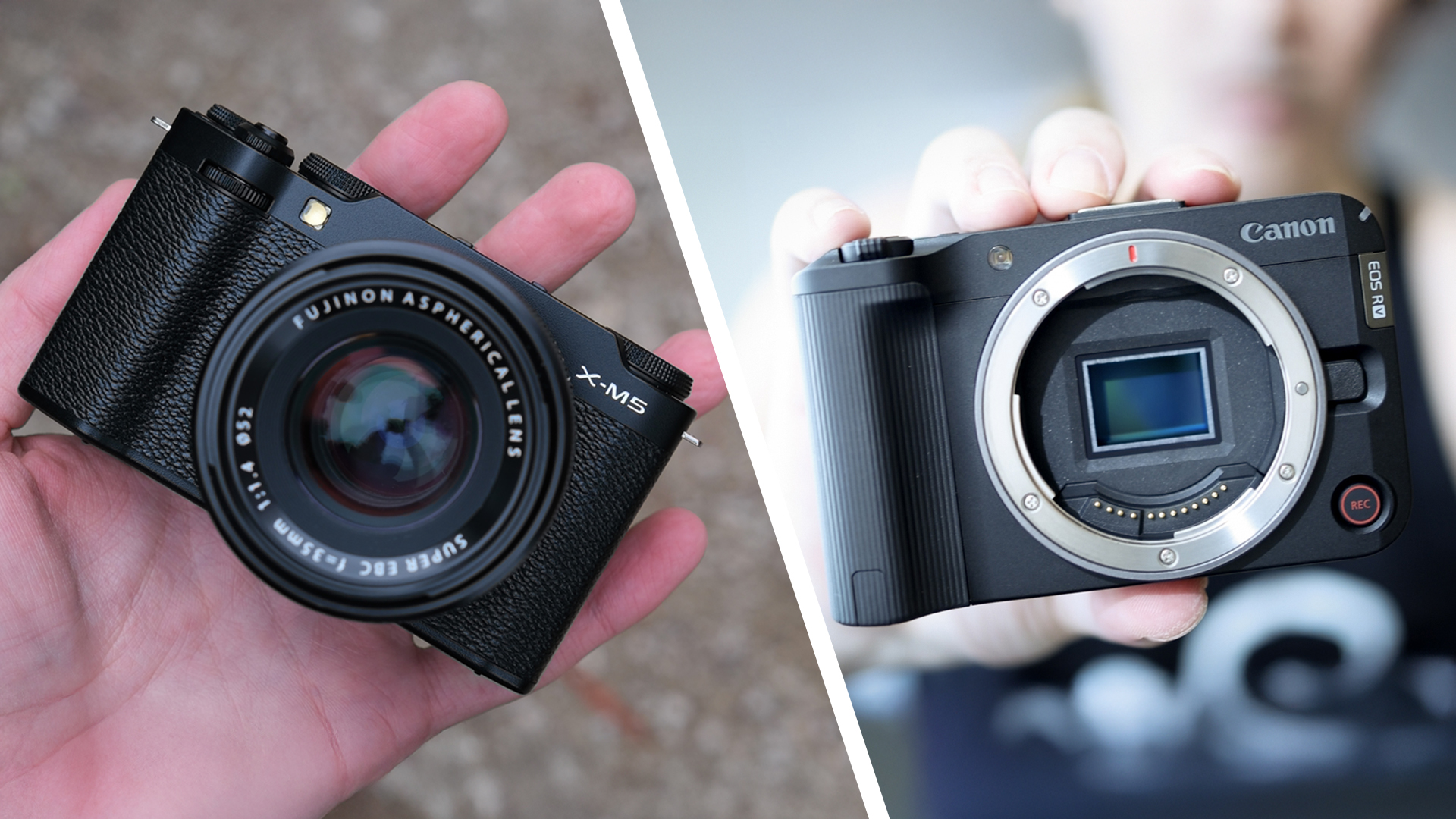
The Canon EOS R50 V and Fujifilm X-M5 are two of the hottest mirrorless cameras vying for the attention of vloggers this year. On paper, they share a lot in common. Both are compact APS-C interchangeable-lens cameras optimized for video. Yet there are key differences that could make each appeal to a different kind of content creator.
The Canon EOS R50 V is a video-focused spin on Canon’s entry-level R50, packing Canon’s renowned Dual Pixel autofocus and a friendly price point. In contrast, Fujifilm’s X-M5 is a stylish retro-inspired camera aimed at creators who want pro-level video features (like open-gate 6.2K recording) and Fujifilm’s signature film simulation modes in an ultra-portable body.
If you’re a beginner vlogger or YouTuber on a budget, the Canon’s lower cost might initially draw you in. but, the X-M5 offers a bit more for creative videographers and hybrid shooters who appreciate its classic design and extra video tools. But which camera earns the vlogging crown? Let’s dive in!
At a glance
| Row 0 - Cell 0 | Canon EOS R50 V | Fujifilm X-M5 |
Sensor | 24MP APS-C | 26.1MP APS-C |
Lens mount | Canon RF / RF-S | Fujfilm X |
Autofocus | Stills: 4,503 points, Movies: 3,713 points | 425 points |
Recognised subjects | Human, Animal, Bird | Auto, Human, Animal, Bird, Vehicle |
In-body image stabilization | None | None |
ISO range | 100-32,000 | 160 - 32,000 |
Max video resolution | 4K60p (1.5x crop), 4K30p, FHD 120p, 4:2:2 10-bit | 6.2K open gate, 4K60p(1.18x crop), 4k30p, FHD 240p; 4:2:2 10-bit |
Viewfinder | None | None |
Rear screen | 3-inch, 1.04 million dots | 3-inch, 1.04 million dots |
Memory | 1x SD UHS-II | 1x SD UHS-II |
Connectivity | WiFi, Bluetooth, USB-C, Micro HDMI, headphone jack, microphone jack | WiFi, Bluetooth, USB-C, Micro HDMI, headphone jack, microphone jack |
Battery | LP-E17 | NP-W126S |
Dimensions | 119.3 x 73.7 x 45.2mm | 11.9 x 66.6 x 38 mm |
Weight | 323g (body only) | 355g (body only) |
Price
- Canon EOS R50 V: $649.99 (body only), $849.99 with RF-S 14-30mm f/4-6.3 IS STM PZ kit lens
- Fujifilm X-M5: $799.99 (body only), $899.99 with XC 15-45mm f/3.5-5.6 OIS PZ kit lens
The Canon EOS R50 V is the more affordable option. At $649 for the body, the R50 V undercuts the X-M5 at $799, so we’re looking at a $150 difference for the bodies, which is substantial in this entry-to-mid-tier segment, and both of these are even cheaper than rivals like Sony’s ZV-E10 II ($999 body).
When you consider kit prices, Canon also comes out ahead with the EOS R50 V and RF-S 14-30mm PZ lens kit is $849, whereas the X-M5 plus XC 15-45mm kit is $899. Neither of these kit lenses is particularly high-end, but both have image stabilization and power zoom, which are very useful for video.
Beyond initial pricing and considering value for money, Canon is delivering almost the same core specs (4K60, 24MP stills, flip screen, mic/headphone) for less cash. Fuji charges a bit more but you do get some extras including open-gate 6K, FHD240fps, and film simulations. If those extras are important to you, you might be wiling to stretch your budget, but for beginner vloggers on a tight budget, the Canon’s lower cost could be the deciding factor.
Winner: Canon EOS R50 V
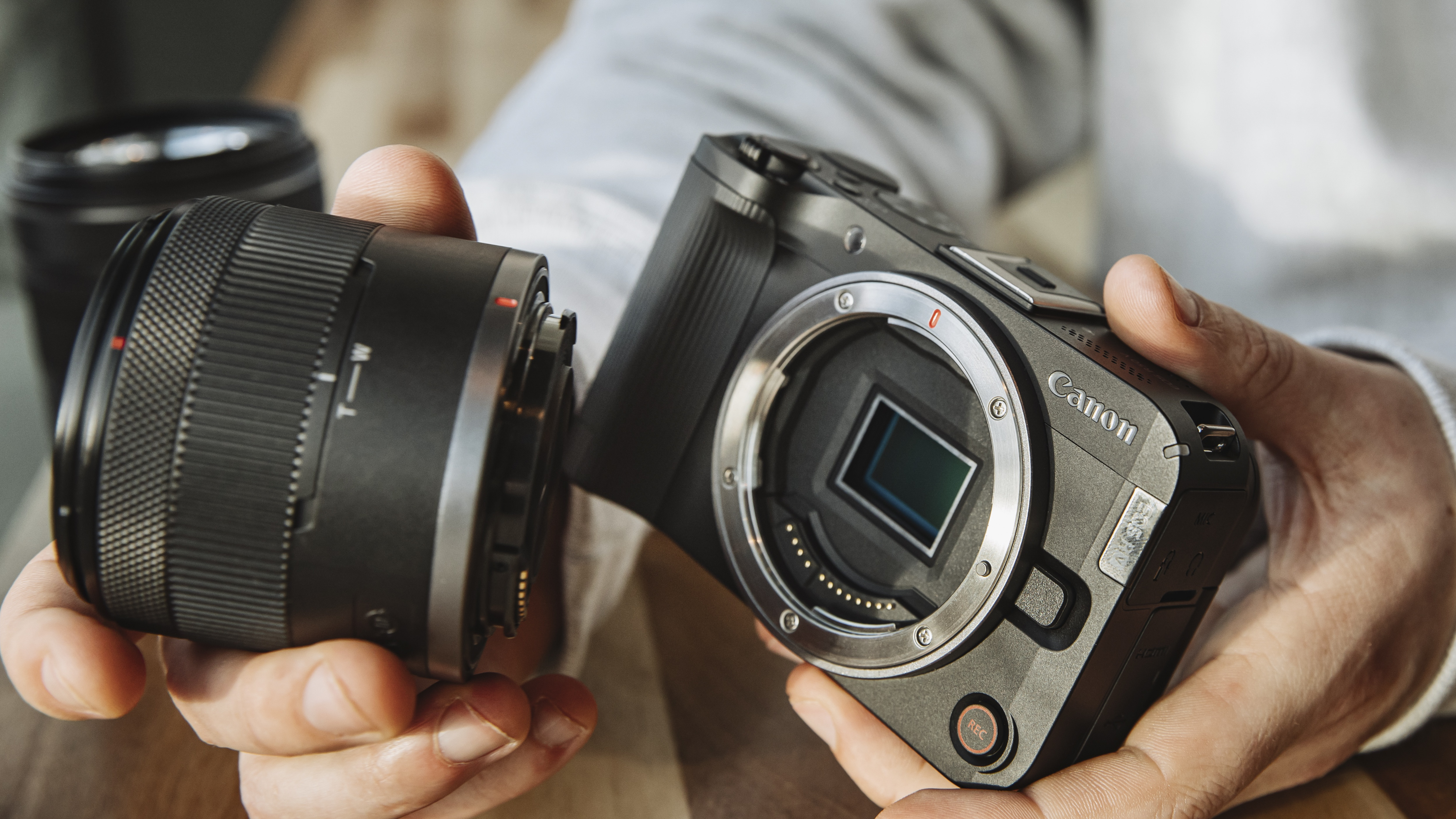
Design and Handling
- Canon EOS R50 V: 119.3 x 73.7 x 45.2mm, 323g
- Fujifilm X-M5: 111.9 x 66.6 x 38mm, 355g
At first glance, both cameras are tiny and lightweight, easily slipping into a bag for on-the-go shooting. Despite their small frames, each manages to include a decent hand grip, so you won’t feel like you’ll drop the camera when talking to it at arm’s length. Neither has a built-in electronic viewfinder – a deliberate omission to keep size down. But both feature similar fully articulated rear touchscreens that can face forward for selfies or vlogging.
Controls and styling are where the two cameras diverge. Canon has styled the R50 V more like a mini cinema camera than a traditional mirrorless. It has a clean, modern look with a new video-centric top mode dial and a prominent red record button on the top plate for quick access. Canon also added a second record button on the front of the camera – perfect for starting/stopping recording when the lens is facing you. The Fujifilm X-M5, on the other hand, embraces Fujifilm’s classic style. Instead of a traditional mode dial, Fuji gives you a dedicated Film Simulation dial on the left, letting you instantly switch between up to 8 of your favorite film looks (out of 20 available).
The X-M5’s tiny size and rangefinder-like design make it the lightest X-Series camera to date, and smaller than the R50 V. However diminutive size is a double-edged sword, and you may find the Canon a more comfortable hold, especially if you have larger hands or plan to attach bigger lenses.
Overall, there isn’t a huge handling gulf between them – both are designed to be simple and approachable. Canon’s design skews toward the needs of solo content creators with its front rec button and ergonomic nods to video use. Fuji’s design will appeal to those who love a touch of old-school style and tactile controls. This category largely comes down to personal preference: do you prefer the cine style of the Canon or the nostalgic feel of the Fuji?
Winner: Tie
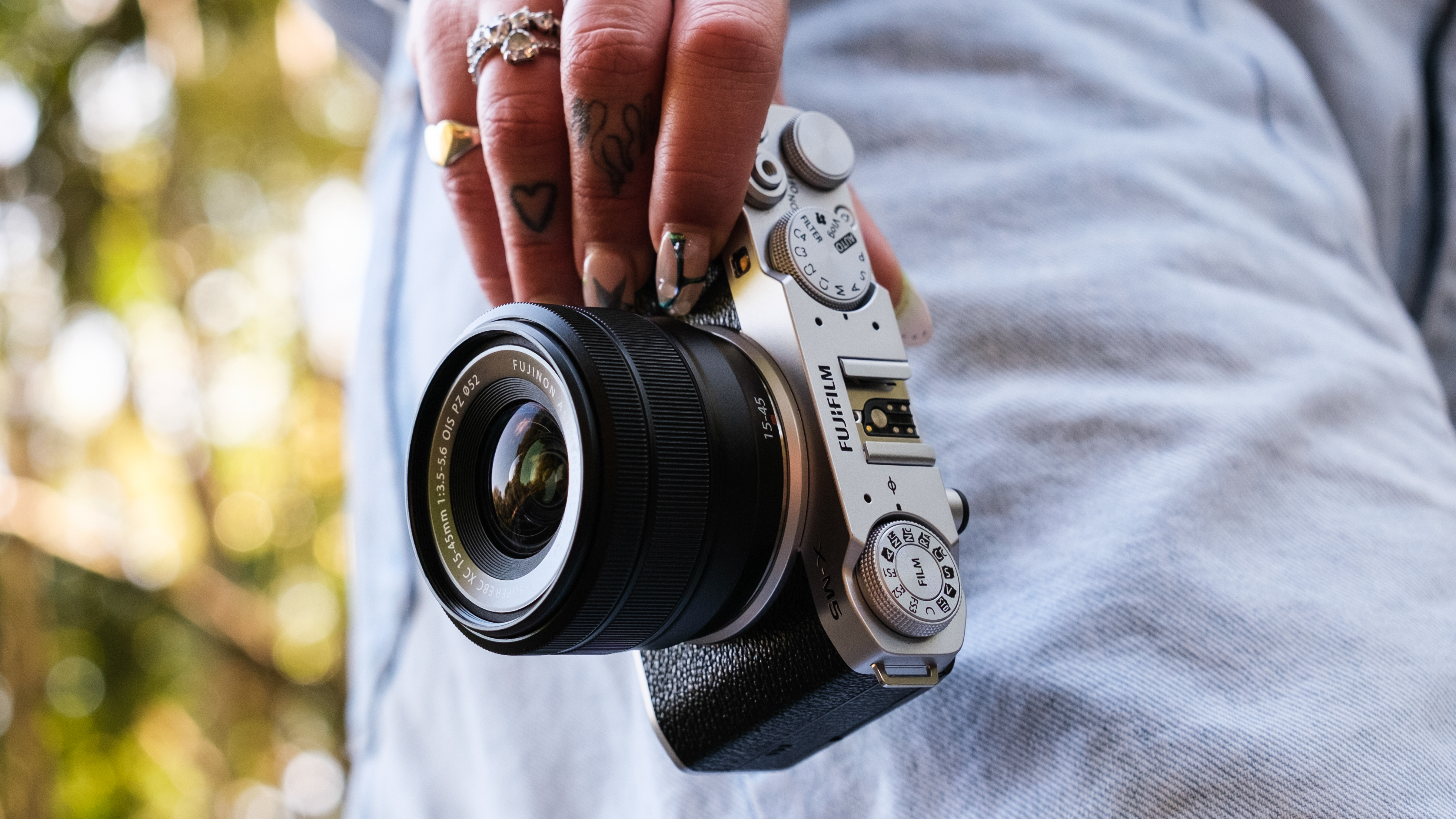
Video
- Canon EOS R50 V: 4K/60p (1.5x crop), 4K/30p, FHD/120p; 10-bit 4:2:2 Canon Log 3
- Fujifilm X-M5: Open Gate (3:2) 6.2K/30p, 4K60p (1.18x crop); 4K/30p, 1080p/240p; 10-bit 4:2:2 F-Log/F-Log2
For pure video specs, the Fujifilm X-M5 flexes some bigger numbers, but Canon’s EOS R50 V is no slacker either – and both deliver impressive quality for the price. Both cameras can capture 4K resolution at up to 30 frames per second internally oversampled from 6K, and both cameras offer 10-bit 4:2:2 color for maximum editing flexibility.
However Fujifilm has the edge with a top resolution of 6.2K (no crop), and it can record its 6.2K footage using “open gate” recording that uses the entire sensor area (3:2 aspect ratio). Fujifilm’s 6.2K open-gate mode actually records a taller frame (6240×4160 resolution) that you can later crop to horizontal 16:9 or vertical 9:16 – a huge plus for multi-platform content creators since you can capture both widescreen and vertical framing in one take.
When it comes to slowing down the action, Fujifilm clearly wins on paper. It can shoot 1080p at up to 240 fps while the Canon tops out at 1080p 120 fps. For higher quality footage both cameras have a top speed of 60 frames per second in 4K – although both have a crop. Where the X-M5 has a relatively minor 1.18x crop, the Canon EOS R50 V has a far more severe 1.5x crop. In real terms, this translates to an 18-55mm lens becoming a 21-65mm on the X-M5 or 27-83mm on the R50 V. This won’t affect image quality, but it can severely limit what you are able to frame in your shot.
Neither camera has in-body stabilization, but both offer digital stabilization for video. If you enable digital IS, expect an additional crop on both cameras. However, Canon’s RF-S 14-30mm kit lens has optical IS (OIS) with up to 5 stops of stabilization, and Fuji’s XC 15-45mm kit lens also has OIS. These lens stabilizers will help smooth out handheld shots.
Winner: Fujifilm X-M5
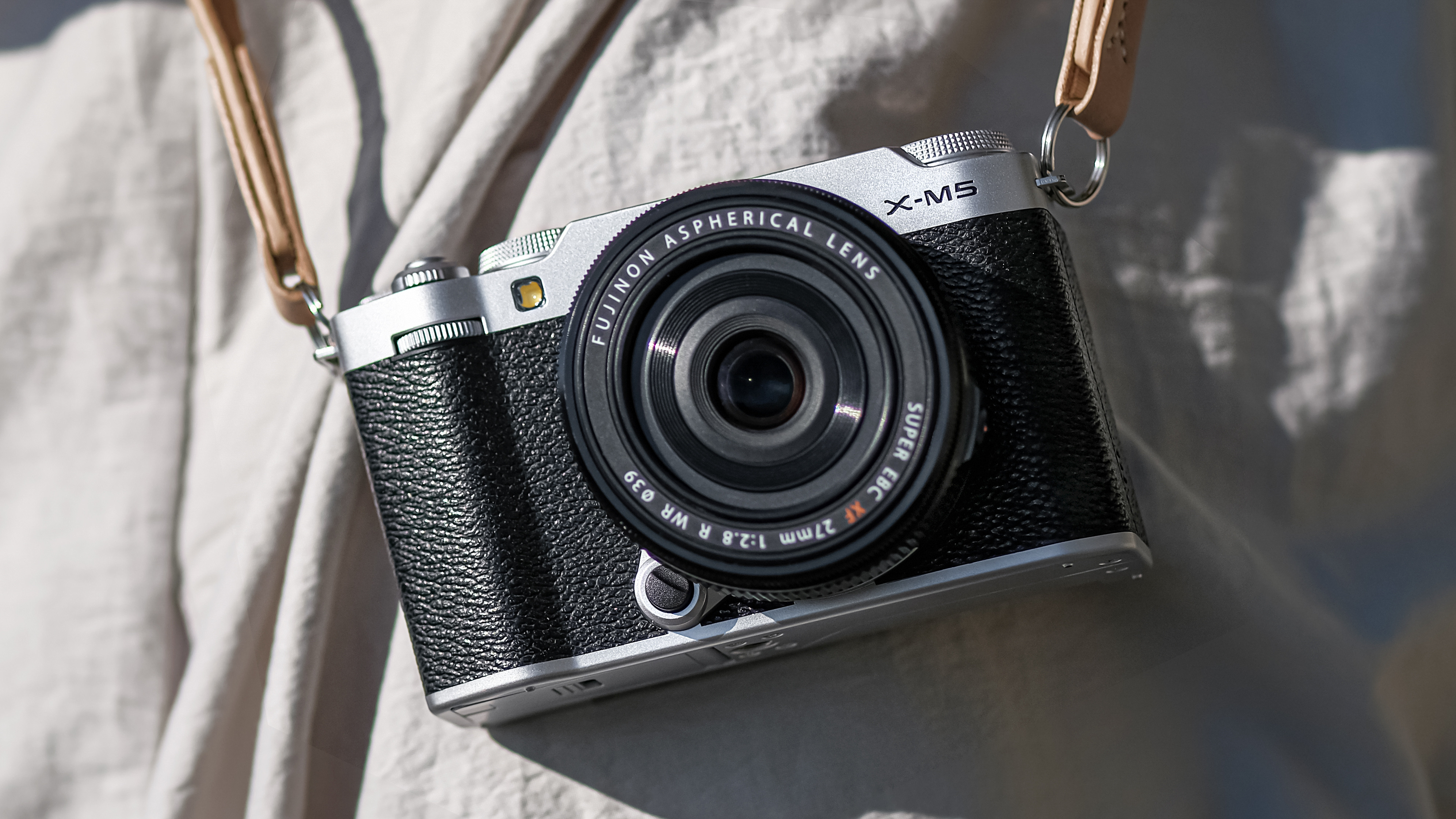
Audio
- Canon EOS R50 V: Stereo internal mic, 3.5mm mic input, 3.5mm headphone output
- Fujifilm X-M5: Three internal mics (stereo + third for directional capture) with 4 selectable pickup patterns, 3.5mm mic input, 3.5mm headphone output
Good audio can elevate your vlogs, and both cameras have upgraded internal mics and the necessary ports to hook up external microphones as well as monitor your sound. Canon’s EOS R50 V adds a headphone jack that the original R50 did not have, so you now have both a 3.5mm mic input and a 3.5mm headphone output on the side. This means you can plug a mic into the camera and also plug in headphones to check that your audio is clean while recording. Fujifilm’s X-M5 likewise includes both mic and headphone 3.5mm sockets.
The difference comes when looking at the built-in microphones. The X-M5 features three built-in mics and four capture modes to tailor the pickup pattern. You can set it to Surround, Front, Back, or Front & Back priority. Essentially, this lets the internal mic system focus on sound coming from in front of the camera (you, the vlogger) or from behind the camera (if you’re narrating behind the lens), or capture all directions for ambient sound. Canon’s R50 V has a more conventional stereo internal capsule mic, and while Canon doesn’t have multiple mic modes, its internal mic is serviceable for scratch audio or casual use, and the wind muff helps clarity outdoors. Canon
Winner: Fujifilm X-M5

Photos
- Canon EOS R50 V: 24.2MP, Dual Pixel AF, 12fps
- Fujifilm X-M5: 26.1MP, Hyrbid AF, 8fps
Both cameras use APS-C size sensors with Canon opting for a 24.2 MP sensor for the R50 V, while Fujifilm X-M5 uses a slightly higher resolution 26.1 MP sensor.
In practice, both sensors should produce excellent image quality for their class – the X-M5 has a minor edge in resolution (the difference of 2 MP is small to negligible). For low light, the Canon’s standard range of ISO 100–32,000 (expandable to 51,200) and Fuji’s ISO 160–12,800 (expandable to 51,200) cover practically the same span. The Canon has a slight edge when it comes to shooting speeds with 12fps using its mechanical shutter versus 8fps for the X-M5, although neither of these cameras will likely be used as a top action camera. Neither camera has in-body image stabilization, but both offer kit lenses with optical image stabilization built-in.
I think the only thing that really separates these two models is Fujifilm's film simulations – which have been the driving force for many people switching to Fujifilm's cameras. Film simulations affect the look of JPEG images straight out of the camera, and are perfect for sharing online with no editing. Canon has similar picture styles, but these are quite on the same level.
Winner: Tie
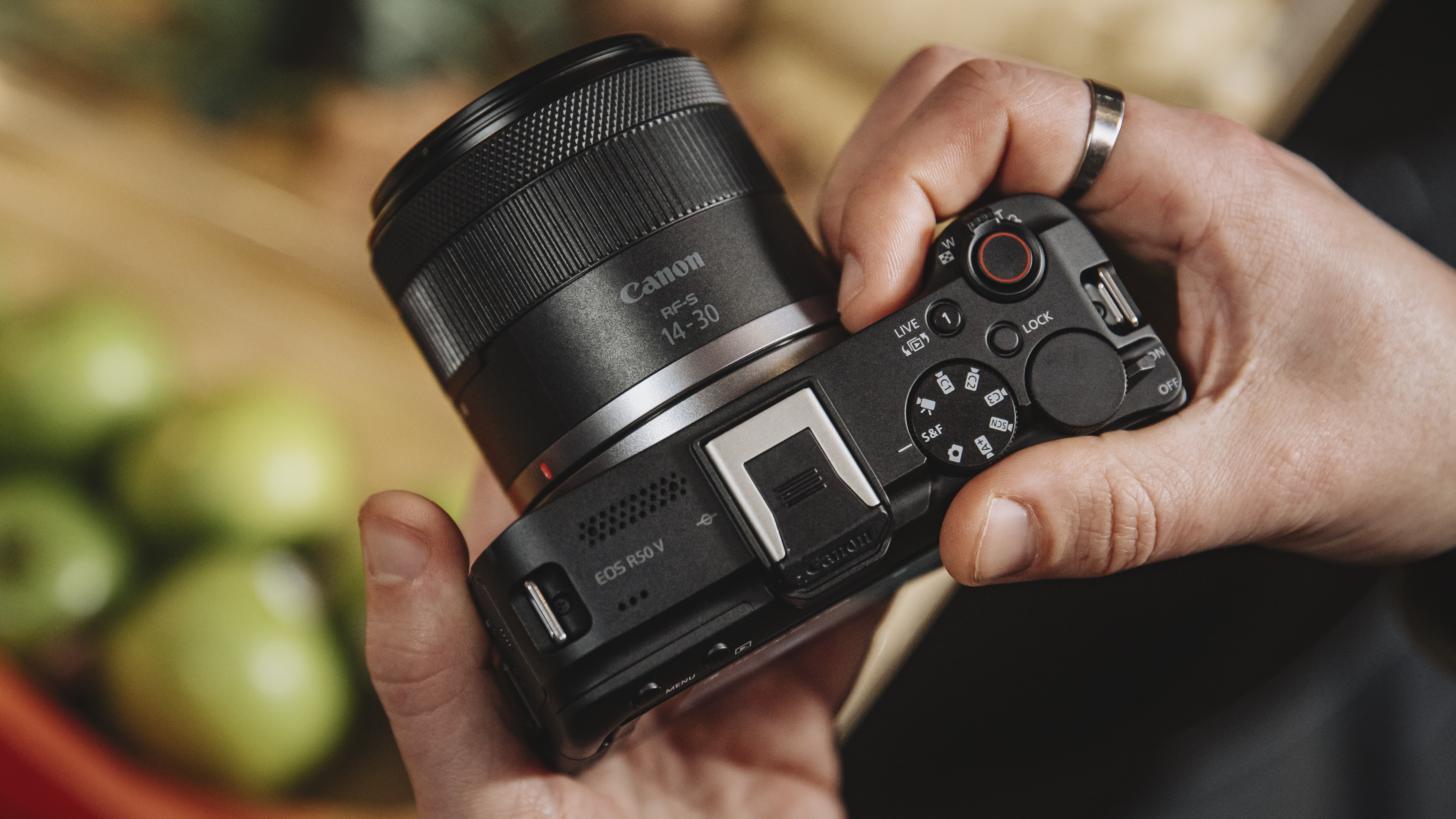
Verdict
Both the Canon EOS R50 V and Fujifilm X-M5 are excellent vlogging cameras that lower the barrier to high-quality content creation. After weighing all the categories each camera shines in different ways, and the “better” choice truly depends on your priorities.
The Canon EOS R50 V comes out on top in one key area that matters greatly for vloggers – price. It delivers almost the same video performance as the Fuji for a significantly lower price and it’s incredible value for someone starting a YouTube channel or upgrading from a smartphone. The Fujifilm X-M5, meanwhile, earns high marks for its feature set and creative flexibility. It’s the tiny powerhouse that gives you features previously unheard of at this level: 6.2K open-gate recording, 240fps slow-mo, and those beloved Fuji film simulations. The X-M5 is perfect for content creators who want to experiment and push their creative limits.
So, which one takes the vlogging camera crown? You really can’t go wrong – both the R50 V and X-M5 prove that we’re in a golden age of affordable vlogging gear. Either way, you’ll be well-equipped to start vlogging your heart out with a camera that fits in the palm of your hand.
Get the Digital Camera World Newsletter
The best camera deals, reviews, product advice, and unmissable photography news, direct to your inbox!

Gareth is a photographer based in London, working as a freelance photographer and videographer for the past several years, having the privilege to shoot for some household names. With work focusing on fashion, portrait and lifestyle content creation, he has developed a range of skills covering everything from editorial shoots to social media videos. Outside of work, he has a personal passion for travel and nature photography, with a devotion to sustainability and environmental causes.
